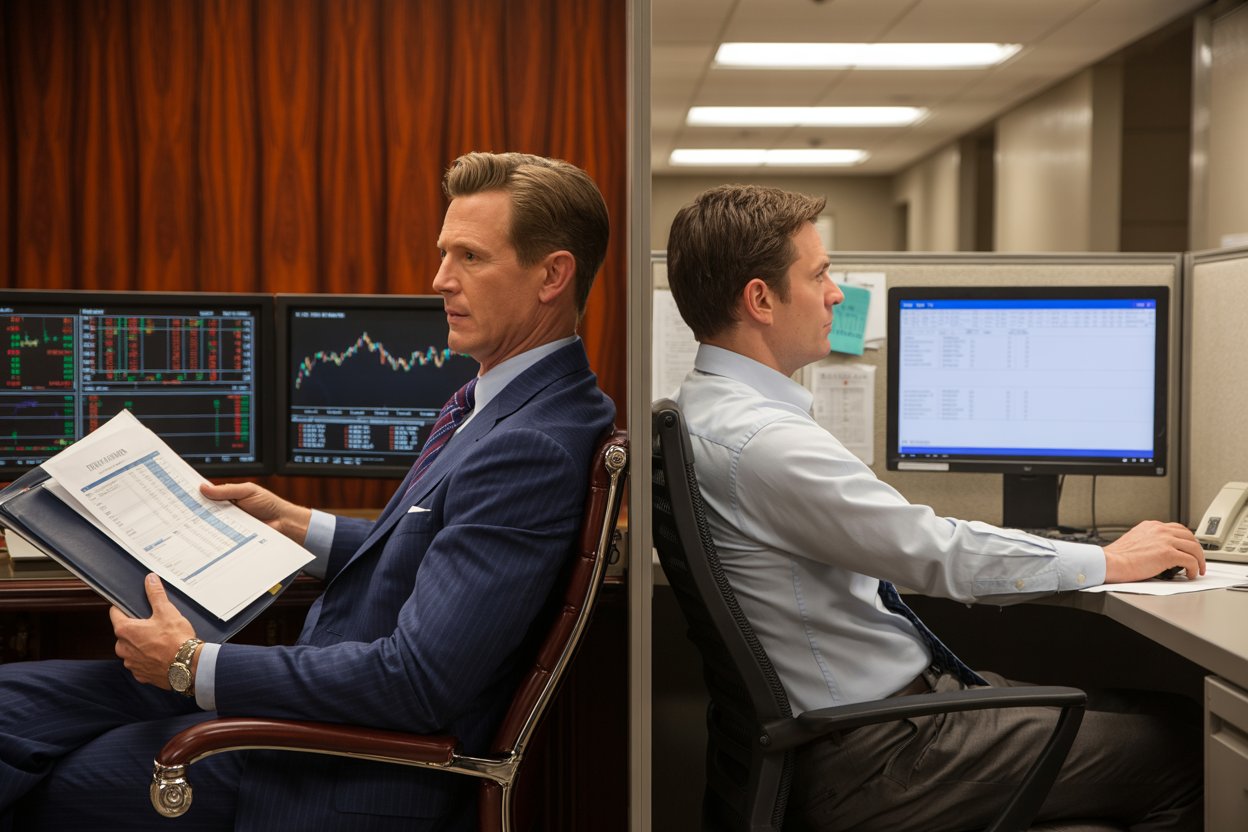The gap between wealthy individuals and the middle class isn’t just about money in the bank—it’s fundamentally about how they think. While most people focus on what rich people do differently, the fundamental transformation happens in how they process decisions, evaluate opportunities, and frame their relationship with money.
The five mental models below operate like invisible software, quietly shaping every financial choice they make. The middle class often approaches wealth-building with strategies that feel safe and logical but ultimately limit their economic potential.
Wealthy individuals operate from a completely different framework that allows them to see possibilities where others see obstacles. Understanding these mental models won’t instantly make you rich, but it will reveal why certain behaviors that seem counterintuitive make perfect sense to those who have built substantial wealth.
1. They Think in Opportunity Costs, Not Dollar Costs
When middle-class individuals evaluate a purchase or investment, they focus on the dollar amount leaving their wallet. Wealthy people frame decisions entirely differently. They don’t just ask what something costs—they ask what it costs them not to do it.
This transforms how they evaluate every decision. A middle-class person might refuse to pay $2,000 for a course. A wealthy person calculates whether the knowledge could generate $20,000 in value over the next year. If it cannot, not buying the course becomes the expensive choice.
This extends into time allocation. If someone can earn $500 per hour through high-value activities, spending three hours on household tasks that could be outsourced for $150 isn’t thriftiness—it’s a $350 loss. Every hour spent on low-value tasks is an hour stolen from high-value opportunities.
2. They Embrace Asymmetric Risk Rather Than Avoiding All Risk
The middle-class mental model of risk is typically binary: risk is perceived as dangerous, so the safe path is also considered the smart path. This leads to careers with steady paychecks, savings accounts with guaranteed returns, and a preference for investments that minimize risk and avoid potential losses. Wealthy individuals operate from a different paradigm built around asymmetric risk.
Asymmetric risk refers to seeking situations where the potential upside vastly exceeds the potential downside. Starting a side business with limited capital but unlimited earning potential represents asymmetric risk. The most you can lose is defined. The potential gain is theoretically unlimited. Compare this to working overtime for time-and-a-half pay, where the upside is capped and predictable.
Wealthy individuals don’t avoid risk—they seek situations where they can take on small risks for potentially significant returns while protecting against catastrophic losses. They’re willing to invest in opportunities where nine out of ten might fail as long as the tenth success generates returns that compensate for all failures combined.
3. They Think in Systems and Leverage, Not Linear Effort
The most fundamental difference lies in how wealthy individuals think about the relationship between effort and results. The middle-class mental model is rooted in linear thinking: work an hour, get paid for an hour. Work harder, earn more.
Wealthy individuals think in terms of systems and leverage. They constantly ask how they can create something that consistently generates value. They build businesses that operate without their direct involvement. They create intellectual property that earns royalties. They invest in assets that appreciate or generate passive income. The goal isn’t to work harder, but to decouple income from the number of hours worked.
This explains why wealthy individuals invest enormous effort upfront with no immediate payoff—they’re building systems. A middle-class person might reject spending a year building a digital product because they can’t see immediate income.
A wealthy person understands they’re creating an asset that could generate revenue for decades. The first year might yield nothing, but year ten could generate substantial income with minimal additional effort.
4. They Optimize for Long-Term Compounding, Not Short-Term Wins
Middle-class financial thinking tends to optimize for feeling good today. When faced with a choice between spending $500 now for immediate enjoyment versus investing it for future growth, the immediate option feels more real and tangible.
Wealthy individuals have internalized a mental model that gives future compounding genuine emotional weight in their present-day decisions. They can viscerally feel the difference between having $500 today and having $5,000 in twenty years. This isn’t about deprivation—it’s about genuinely preferring the larger future outcome.
This extends beyond money into skills, relationships, and reputation. Wealthy individuals invest in relationships that may not yield returns for years to come. They build expertise in areas that have no immediate application. They maintain impeccable integrity, even when cutting corners would be easy, because they know that reputation compounds over decades.
5. They Operate from Abundance, Not Scarcity
Middle-class thinking often operates from scarcity. There’s never enough money, time, or opportunities. This creates defensive financial behaviors focused on protecting what you have rather than expanding what’s possible.
Wealthy individuals genuinely believe in abundance. This isn’t naive optimism—it’s a fundamental framework about how the world works. They believe creating value generates opportunities, that investing in others often returns exponentially, and that money spent on growth isn’t money lost but money deployed.
Someone operating from a scarcity mindset tries to extract the maximum value from every transaction. Someone operating from abundance focuses on creating value and building relationships, trusting that good deals lead to more good deals. They’re willing to forgo short-term gains to build long-term partnerships because they fundamentally believe that opportunities multiply rather than deplete.
Conclusion
These mental models aren’t secrets, but adopting them requires more than intellectual understanding. It requires practicing new ways of thinking until they become automatic. Start asking what decisions cost you in opportunities, not just dollars.
Look for situations with asymmetric risk profiles. Invest time building systems instead of trading hours for income. Make choices that optimize for long-term compounding. Practice thinking in abundance, even when scarcity feels more realistic.
The middle class and the wealthy don’t just have different bank accounts—they have different operating systems running in their minds. Upgrading that software marks the beginning of a fundamental financial transformation.
